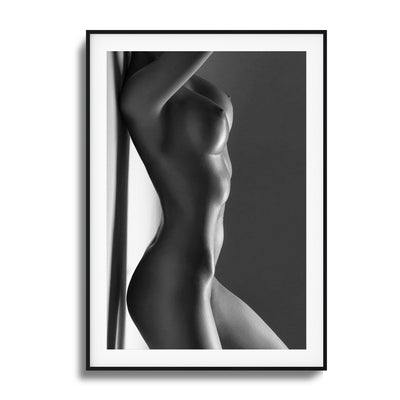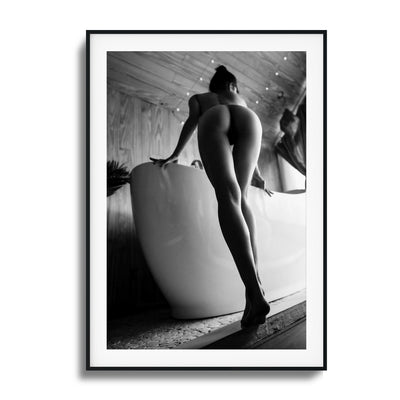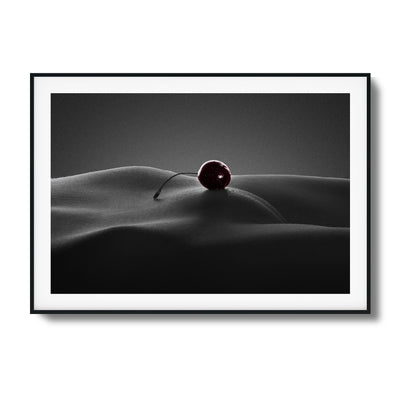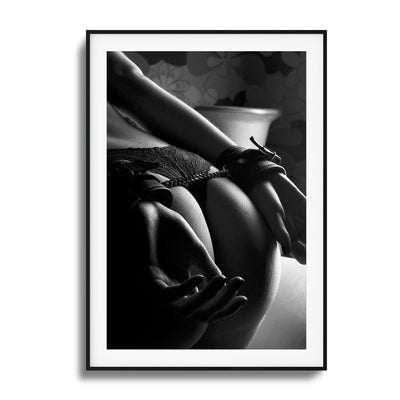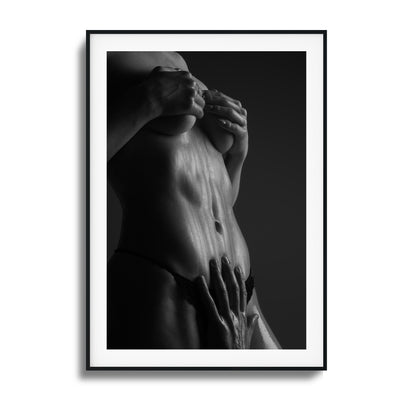Table of Contents
- Introduction
- Choosing the Right Size for Your Space
- Light Colors Make a Big Difference
- Using Perspective to Create Depth
- Where to Hang Your Art for Maximum Impact
- Mixing Art with Mirrors
- Keep It Simple and Stylish
- Conclusion
Decorating a small space can be challenging, but with a few clever tricks, you can make a tiny room feel much larger than it is. One of the most effective ways to do this is by using framed art. This post will walk you through some easy tips on how to use art to open up your space, making it feel bigger and more inviting.
Choosing the Right Size for Your Space
When working with small spaces, size matters—especially when it comes to art. You might think small rooms need small art, but that’s not always the case. A single, large piece of art can actually make a space feel more open by drawing attention and giving the room a focal point. For instance, the "Stormy Waves Framed Art" could be the perfect addition to your living room, creating depth and making the room feel more expansive.
On the flip side, you can also create a gallery wall with a mix of smaller pieces. This adds personality without overwhelming the room. Consider combining pieces like the "Sunset Rodeo Framed Art" and the "Wild Spirit Framed Art" for a balanced yet varied display that can make your small space feel bigger.
Light Colors Make a Big Difference
The colors in your artwork can have a huge impact on how spacious your room feels. Light and bright colors tend to reflect more light, which makes your room feel more open and airy. Art pieces featuring whites, light blues, or pastels can visually expand your space. The "Oasis Framed Art" with its calming blue tones, can make your room feel more open and peaceful.
If your walls are painted in light colors, choose art that blends with your wall color. This can help create a seamless look that tricks the eye into seeing a larger room. The "Ocean Serenity Framed Art" is a great example—it has soft hues that add depth and light, making the room feel larger.
Using Perspective to Create Depth
Art that features a strong sense of perspective—like landscapes, cityscapes, or anything that draws the eye to a distant point—can make a small room feel much larger. For example, the Window to Tranquility Framed Art gives a sense of openness that can make your space feel bigger. These kinds of images trick the eye into seeing more space than there actually is, giving your room that extra dimension.
Where to Hang Your Art for Maximum Impact
Placement is key when you’re decorating a small space. Hanging art higher up on the wall can make the room feel taller by drawing the eye upward. This works particularly well in narrow spaces, where you might want to emphasize the height of the room. For a space that needs a little more height, try hanging the "Skyward Palms Framed Art" vertically to create a sense of height and grandeur.
In contrast, if you want to make a room feel wider, try hanging wide pieces of art above furniture like sofas or beds. The "Sunset Beach Soccer Framed Art" could be perfect for this, stretching the perception of width and making your small room feel more expansive.
Mixing Art with Mirrors
Want to double the impact of your art? Pair it with a mirror. Mirrors reflect light and space, making the room feel larger. When placed near or opposite artwork, they can even reflect the art itself, creating a sense of continuity and making the room feel even bigger. Imagine the "Palm Beach Aerial View Framed Art" alongside a mirror—this setup could really open up your space.
Keep It Simple and Stylish
Less is more when it comes to decorating small spaces. Avoid the temptation to overcrowd your walls. Instead, pick a few key pieces that really complement your room. The "Ocean Foam Abstract Framed Art" could be the perfect single statement piece that ties the room together without making it feel cramped.
Conclusion
Decorating a small space doesn’t mean you have to compromise on style. With the right art, you can make any room feel bigger, brighter, and more welcoming. Play around with scale, color, and placement to find what works best for your space. The right pieces can transform even the smallest rooms into a cozy, spacious haven.
FAQ Section
How can art make a small room feel bigger?
Art can enhance the perception of space through size, color, and placement. Large pieces draw attention and create a focal point, while lighter colors reflect light and make the room feel more open.
What size art should I use in a small space?
While small spaces often call for smaller art, large pieces can create a dramatic effect that opens up the room. Alternatively, a gallery wall with a mix of smaller pieces can also work well.
What color art works best for small spaces?
Light and bright colors tend to reflect more light, making a room feel airier. Artwork in soft tones or those that blend with the wall color can create a seamless look that tricks the eye into perceiving a larger area.
How should I hang art to maximize space?
Hanging art higher on the wall can create the illusion of a taller room, while wide pieces placed above furniture can help stretch the perception of space horizontally.
Can mirrors enhance the effect of art in a small room?
Yes! Mirrors reflect light and can make a room feel larger. When placed near art, they can also reflect the artwork itself, enhancing the overall aesthetic and spatial perception.
What is the best approach for decorating small spaces?
Keeping it simple is key. Select a few key pieces that complement the room without overcrowding the walls. Focus on balance, color, and appropriate sizes for maximum impact.

